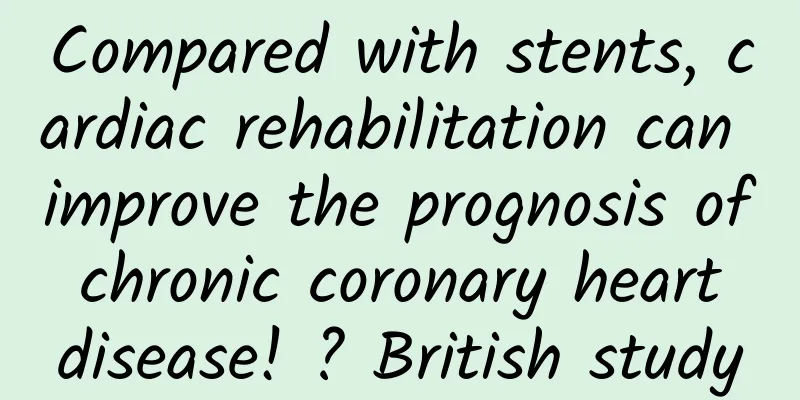What should we do if children have flat feet?

|
Flat feet is an extremely common foot problem in children. The prevalence of flat feet in children is high, with reported rates ranging from 2.8% to 24.2%. Flat feet in children require early identification and prompt intervention to prevent further deformity. 1. Normal arch structure The arch of the foot is composed of the medial arch, lateral arch, and transverse arch. The medial longitudinal arch is composed of the first metatarsal, second metatarsal, third metatarsal, three cuneiform bones, navicular bone, talus, and calcaneal tuberosity. The lateral longitudinal arch is composed of the fourth metatarsal, fifth metatarsal, cuboid bone, and calcaneal bone. The transverse arch is composed of the metatarsal, cuboid bone, cuneiform bone, and navicular bone. The maintenance of a normal arch is the result of the synergistic effect of three mechanisms. First, the tarsal bones and metatarsal bones need to be locked together by the shape of the bones; second, the role of the plantar ligament; and third, the role of the internal and external muscles and tendons of the foot. Maintaining the medial longitudinal arch requires the coordinated action of the tibialis anterior, tibialis posterior, flexor digitorum longus, flexor hallucis longus, abductor hallucis, flexor digitorum brevis, plantar fascia, and plantar calcaneonavicular ligament. The maintenance of the lateral arch requires the coordinated action of the peroneus longus, peroneus brevis, peroneus tertius, abductor digiti minimi, flexor digitorum brevis, long plantar ligament, short plantar ligament, and plantar fascia. Generally speaking, the lateral arch is more stable than the medial longitudinal arch. Maintaining the transverse arch requires the coordinated action of the tibialis anterior, tibialis posterior, peroneus longus, and plantar fascia. 2. Function of the arch of the foot The functions of a normal arch of the foot mainly include three aspects: bearing the load of the human body, buffering shock, and protecting the blood vessels and nerves of the plantar . When the human body stands normally, the load line generally runs from the center of the femoral head, through the knee joint and the midline of the ankle joint to the first and second metatarsal bones of the foot. If there is a problem with the arch of the foot, it will directly lead to abnormal changes in the load line of the human body. 3. Development of children's arches All children are born with flat feet. The incidence of flat feet is 100% in children under 2 years old. Children of this age group have a fat pad under the medial longitudinal arch of the foot. After the child is 2 years old, the fat pad begins to gradually disappear. When children are 2-3 years old, the fat on the soles of their feet decreases and the medial longitudinal arch gradually appears. As children grow older and their muscles and bones develop, the arch of the foot is basically formed when they are 7-8 years old. By the time a child reaches prepubertal development, the arch of his foot has completed development. 4. What is flat feet Flat feet refers to a foot disorder with a flat longitudinal arch. It can be seen that children with flat feet do not have an obvious medial longitudinal arch, and the calcaneus is in eversion and the forefoot is in abduction state. Under normal circumstances, the child's plantar pressure is normally distributed, and flat feet will cause abnormal plantar pressure in children. If the child is under abnormal force lines for a long time, the plantar pressure is unevenly distributed, and foot discomfort will occur, including foot pain, eversion, plantar fasciitis, medial knee pain, etc. 5. Classification of flat feet 1. Classification by location Longitudinal arch collapse: The main manifestations are the collapse of the longitudinal arch of the foot, heel valgus, forefoot abduction, pronation, and tibia internal rotation. Children with flat feet are prone to foot fatigue, foot pain, calf pain, lateral ankle pain, and dorsum swelling after long-term walking and weight bearing. These symptoms can be relieved after rest. If a child has unilateral flat feet, it will lead to genu valgum over time. Transverse arch collapse: The main manifestation is that the second and third metatarsal heads bear too much weight, which will cause pain and widening of the forefoot. When children with flat feet stand or walk, they will bear weight on the inside of the foot, which will also lead to problems such as weakened toe grip, tibial injury, hallux valgus, Achilles tendonitis, etc., greatly increasing the incidence of arch overwork injuries in children. 2. Classification according to the soft and hard properties of the deformity Soft flat feet: refers to the normal arch of the child's foot when not bearing weight, but the arch of the child's foot sinks when bearing weight. This type of flat feet is mostly physiological and generally does not cause pain or other symptoms. If the child has symptoms such as pain, it needs to be taken seriously and treated in time. Rigid flat feet: refers to a rigid flat foot. A child's flat feet cannot be corrected. If a child's arch is flat when sitting, standing, or standing on tiptoes, it indicates rigid flat feet. Obese children are more likely to have rigid flat feet. 6. Treatment of flat feet Treatments for flat feet in children include exercise therapy, orthopedic insoles, and surgery. (1) Exercise therapy It is suitable for the treatment of soft flat feet and can adopt methods such as joint mobility training, stretching training, strength training, proprioception, and balance training . Passive range of motion training can be performed on all joints of the ankle and foot. You can perform stretching exercises for the triceps surae and peroneus brevis. Strength training: Mainly train the tibialis anterior, tibialis posterior, hallux flexor longus, plantar intrinsic muscles, and hallux abductor muscles. For example, let the child stand, let his foot step on the towel, and then use the heel as a fulcrum, keep the knee joint as still as possible, and let the child flex the toes to grab the towel; in addition, you can also let the child sit, wrap the elastic band around the arch of the child's foot, and let the child do resistance elastic band foot inversion training. Proprioception and balance training methods include toe walking training, heel walking training, single-leg weight-bearing training, and downward training on an inclined plane, such as letting the child stand, then lift the heel, keep the toes on the ground, and try to maintain body balance, and do toe walking training. Plantar fascia relaxation can be performed, such as letting the child sit or stand, and rolling a small ball on the sole of the child's foot, paying attention to even and soothing force. (2) Orthopedic insole treatment Orthopedic insoles can provide external support for the arch of the foot, so that the pressure on the sole of the foot of a child with flat feet is evenly distributed to the forefoot and hindfoot when standing and walking, so that the human body is in the correct biomechanical line state and can effectively support the weight of the human body. The main purpose of using orthopedic insoles to treat flat feet is to adapt to the flat foot state, disperse the pressure on the sole of the foot, improve the load-bearing function and load-bearing force line of the sole of the foot, and improve the skin sensation and proprioception of the sole of the foot. For the treatment of flat feet with orthopedic insoles, it is necessary to select suitable orthopedic insoles according to the different conditions of the child. The treatment of soft flat feet is mostly made of insoles made of leather, foam plastics, gel, silicone rubber, etc. This type of insole is relatively soft and elastic, and is more suitable for early and mild soft flat feet. For severe soft flat feet and rigid flat feet, you can consider using insoles made of plastic or metal plates, which need to be molded according to the child's sole model. This kind of insole is harder, more durable, and not easy to deform. It is more suitable for children with severe flat feet who need to wear it for a long time. (3) Surgical treatment Surgery should generally not be considered for children younger than 10 years old. If the child is over 10 years old and his flat feet problem cannot be cured by conservative treatment, surgical treatment should be considered. Surgical treatments include tendon transfer, joint fusion, etc. Author: Zhou Xuan (Deputy Chief Physician, Department of Rehabilitation Medicine, Xinhua Hospital Affiliated to Shanghai Jiao Tong University School of Medicine) Some pictures edited by: Li Chuan (Department of Rehabilitation Medicine, Xinhua Hospital Affiliated to Shanghai Jiao Tong University School of Medicine) |
<<: How to prevent children from dry eyes during summer vacation?
>>: How to prevent eye inflammation after swimming?
Recommend
What to do if girls have facial skin pigmentation
Nowadays, environmental pollution is quite seriou...
In which month can we eat spinach? Why is it difficult to grow spinach in summer?
Many friends now pay special attention to health ...
How to wear a breast patch?
In modern society, women's understanding of b...
Reasons for missing menstruation for four months
Many gynecological diseases occur frequently in d...
How to choose a home printer? How to use a router to print wirelessly
A printer is one of the output devices of a compu...
What's the matter with the sulfur dioxide residue in Qia Qia melon seeds? Can Qia Qia melon seeds still be eaten?
It was revealed that Qia Qia melon seeds containe...
The reason why I haven't had my period for two months
Girls will have their periods after puberty, and ...
Is amniocentesis accurate for DNA testing?
Nowadays, many expectant mothers do not trust the...
What is the function of milk banana mask? How to make and consume milk banana mask
Night is the "golden time" for skin bea...
What is the best thing to eat during menstruation?
Women should pay special attention to their bodie...
How to recover after a normal birth?
Because natural childbirth has many benefits for ...
What are the symptoms of high cholesterol in women?
High cholesterol can be harmful to your health, e...
Is facial cleansing really good?
Is it really good to wash your face in a beauty s...
How to relieve incision pain after cesarean section
Giving birth is extremely harmful to the body of ...
Why do I fart down there?
The structure of the human body is very magical, ...









